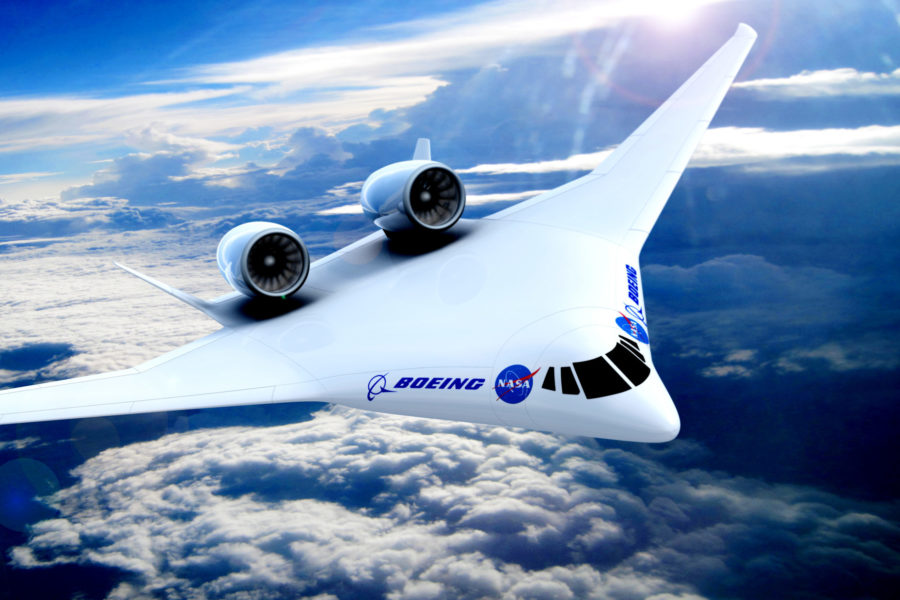
With a design that differs from a traditional tube-and-wing aircraft, the blended wing body blends the aircraft body into its high-aspect-ratio wing, decreasing aerodynamic drag by at least 30% and providing additional lift.

The Department of the Air Force selected JetZero for the next phase of a blended wing body (BWB) prototype aircraft project Aug. 16.
According to a USAF news release, the effort aims to mature BWB technology and demonstrate its capabilities, giving the department and commercial industry more options for future air platforms.
With a design that differs from a traditional tube-and-wing aircraft, the BWB blends the aircraft body into its high-aspect-ratio wing, decreasing aerodynamic drag by at least 30% and providing additional lift. This increased efficiency will enable extended range, more loiter time, and increased payload delivery efficiencies, capabilities that are vital to mitigating logistics risks.
“Blended wing body aircraft have the potential to significantly reduce fuel demand and increase global reach,” said Secretary of the Air Force Frank Kendall. “Moving forces and cargo quickly, efficiently, and over long distance is a critical capability to enable national security strategy.”
Several military transport configurations are possible with the BWB. Together, these aircraft types account for approximately 60% of the Air Force’s total annual jet fuel consumption.
As outlined in the fiscal year 2023 National Defense Authorization Act, the Department of Defense plans to invest $235 million over the next four years to fast-track the development of this transformational dual-use technology, with additional private investment expected. The effort is the result of collaboration between the Department of the Air Force, the National Aeronautics and Space Administration, and the Defense Innovation Unit, with assistance from the DoD’s Office of Strategic Capital.
As reported by Alert 5, in this transformative journey, JetZero is joined by industry titans Northrop Grumman and Scaled Composites, bringing their formidable expertise in advanced aircraft design, manufacturing, and mission systems integration. A powerful partnership indeed, this consortium is set to harness the future of aviation. JetZero has also chosen Pratt & Whitney, a world-renowned name in aviation propulsion systems, to provide engines for the prototype aircraft.
“It’s been a little over a hundred years since a few brave Airmen took to the skies and proved the first aerial refueling capability, extending the global reach of our Air Force. This announcement marks another game-changing milestone for the Air Force in our efforts to maintain the advantage of airpower effectiveness against any future competitors,” said Dr. Ravi Chaudhary, assistant secretary of the Air Force for Energy, Installations, and Environment. A former C-17 Globemaster III pilot and engineer, Chaudhary is leading efforts to ensure efficiencies in operational energy to build greater agility for theater commanders.
While the BWB concept has been around for decades, more recent technology advancements in structural design, materials technology, manufacturing, and other areas have made large-scale production achievable.
The commercial industry, including passenger airlines and air freight companies, stand to benefit from development of this technology as well, increasing available cabin or cargo space while decreasing operational fuel costs.

The Air Force Operational Energy Office expects completion of initial flight testing as early as 2027.
As already reported Secretary of the Air Force Frank Kendall said in January that given China’s growing reach with precision missiles, the USAF must shift away from traditional tankers and cargo aircraft towards stealthy ones.
Kendall explained that “the traditional route” of turning a commercial aircraft like the DC-10 or 767 into tanker or cargo plane, or even designing a custom aircraft like the C-17 without a “high premium on survivability” will no longer meet USAF’s needs.
His remarks came months after the Pentagon’s Defense Innovation Unit requested market information on the BWB aircraft concept, planning a full-scale test by 2027 as part of an effort to develop more efficient and environmentally-friendly aircraft, including tankers.
BWBs—essentially flying wings like the Air Force’s B-2 and B-21 bombers—also offer the advantage of having a slim profile and an inherently smaller radar cross section than traditional cylinder-and-wing aircraft, particularly if designers eliminate vertical control surfaces.
According to JetZero website the company is developing an ultra-efficient Blended Wing Body jet with unprecedented performance. Working with the US Air Force, NASA and the FAA for entry-into-service by 2030.
The JetZero Blended Wing is the biggest leap in commercial aircraft architecture since the dawn of the jet age and the best first step toward the ultimate goal of zero-carbon emissions aviation. The aircraft will launch in 2030 with 100% sustainable aviation fuel (SAF) compatibility, and the internal volume to accommodate zero-carbon emissions hydrogen.
According to JetZero “The aircraft dramatically improves aerodynamic efficiency over traditional tube designs which are fundamentally unstable and require large tail surfaces, creating yet more weight and drag.
“The Blended Wing is a naturally stable design requiring no tail surfaces, which eliminates unnecessary complexity. A shorter, wider fuselage is blended together mimicking the wing to provide lift. This reduces the surface needed, creating a lighter aircraft with less drag.

“The beauty of efficiency is that it compounds. With less drag and weight, the size of the engines is reduced, which further reduces drag and weight. The result is an aircraft with the passenger capacity and range of a small wide body that uses the engines of existing narrow-body planes. This breakthrough fills the mid-market gap with an aircraft that achieves half the fuel burn and emissions of the aging fleet it will replace.”
